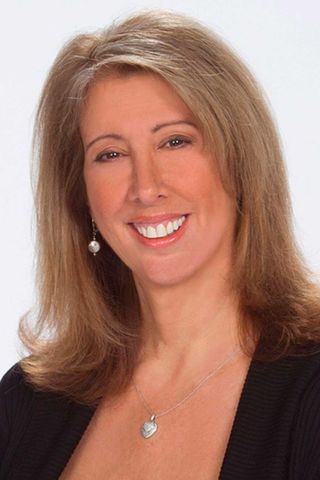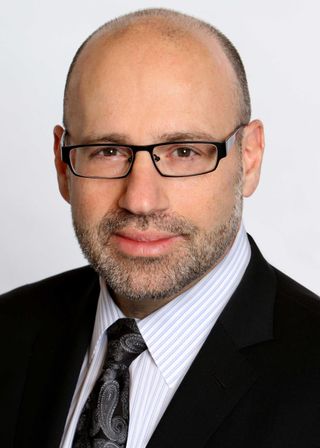Buyers Bank On a Content Comeback

Why This Matters: The TV station business is not dead and, as a result, neither is broadcasters’ need for new programming.
Syndication is looking to make a comeback.
After several slow years in which there haven’t been many available time slots and studios didn’t develop much, word is every major producer has shows in the hopper. With NBCUniversal’s Harry, starring Harry Connick Jr., officially over after this season and other major shows, such as NBCU’s Steve, starring Steve Harvey, potentially going away, studios smell opportunity.

To try to get a jump on this, the Fox Television Stations are again spending their summer testing potential new shows, including viral video show The Hustle, from Warner Bros., and 25 Words or Less, from producers Lisa Kudrow and Dan Butinsky and starring Meredith Vieira.
“This year, it was probably a little bit softer than in most years with people trying to figure out the landscape,” Greg Conklin, VP of corporate programming for Gray Television, told B&C. “I would have loved to have a few more choices and it would be nice to have a new game show to talk about.”
Conklin may get that chance if 25 Words or Less gains any traction this summer. Last summer, another game-show test — iWitness, from Judge Judy Sheindlin — failed to grab viewers’ attention. But with games faring well in primetime and no new ones having launched in syndication since Debmar-Mercury’s Celebrity Name Game in 2014, it could be a good time to try.
Warner Bros. is producing a pilot of a new talk show starring RuPaul, creator and star of VH1’s RuPaul’s Drag Race, and will likely take that show to market as soon as possible to get a jump on the competition.
Broadcasting & Cable Newsletter
The smarter way to stay on top of broadcasting and cable industry. Sign up below
Other studios, such as Sony Pictures Television, have made structural changes to try to better position themselves to take advantage of a changing (and challenging) marketplace. For example, in June, John Weiser switched from president of U.S. distribution to president, first-run programming, at Sony.
“We are looking forward to a very active summer,” Hearst Television senior VP, programming Emerson Coleman said. “So many distributors are kicking the tires about new shows, it’s just a matter of whether those shows get to the finish line or not.”
Just because there has been a recent lack of flashy shows starring celebrities — such as Harry in 2016 or Queen Latifah in 2013 — doesn’t mean there has been nothing new.
This fall, Debmar-Mercury will premiere Caught in Providence, starring 81-year-old Municipal Court Judge Frank Caprio, on stations across the country, and CBS Television Distribution will debut Face the Truth, starring Vivica A. Fox and Bar Rescue’s Jon Taffer, from Jay McGraw’s Stage 29 Productions.

Distributors also are coming up with creative ways to deal with the slim first-run pipeline. Former syndication executives Barry Wallach and Joe DiSalvo have cleared True Crime Files, composed of episodes of true-crime series from cable network Investigation Discovery’s vast library, in more than 90% of the U.S. NBCU is following up last fall’s repackaged Dateline with another new off-network offering, Chicago P.D., cleared in more than 95% of the country as a one-hour strip and on MyNetworkTV on Tuesday nights. And broadcasters, such as Gray Television, have picked up E.W. Scripps’ Pickler & Ben, produced by Scripps in Nashville and distributed by Disney-ABC, in many markets.
“Our focus really continues to be on season two of Pickler & Ben, season eight of The List and season nine of RightThisMinute,” E.W. Scripps president, local media Brian Lawlor said. “Those are all original programs that are distributed nationally that we own either ourselves or with partners. But our strategy has never been to create all of our own programming.
“We like to have a balance of shows from studios and shows that we create,” Lawlor added. “We have an appropriate balance now.”
The fact that station groups such as Scripps and Tegna are jumping in to produce their own programming speaks to the reality that studios have pulled back. Studios will complain that stations are taking time slots with their self-produced shows, but at the same time, they aren’t coming out with compelling new product. And the economics continue to be challenging for everyone — stations aren’t able to commit license fees for new shows at the same level in an age where a 2.0 household rating would practically be a runaway hit.
“Our industry needs new creativity and companies taking risks on programming that will invigorate the audience,” Lawlor said.
B&C talked with some of syndication’s most influential buyers to get their takes on the shape of the syndication landscape for fall 2018, 2019 and beyond:
Frank Cicha
Senior VP, Fox Television Stations

Several years ago, Fox Television Stations set its strategy of offering viewers as much day-and-date, first-run programming as possible. That’s a strategy that continues to pay off with such shows as Debmar-Mercury’s Wendy Williams and Warner Bros.’ The Real, TMZ and TMZ Live.
Those shows tend to spend most of their time discussing very current issues in very authentic ways, drawing audiences in with their daily hot takes. Fox also spends every summer testing several shows, and this summer, the group had the extra advantage of having the 2018 FIFA World Cup from June 14 to July 15, when France defeated Croatia 4-2 to win its second World Cup in 20 years.
“One of the reasons the World Cup is doing well is because no one is doing anything else,” Cicha said.
Having original programming on the air year-round — whether that’s first-run syndication or sports — is something to which Cicha and Fox aspire.
“I would like every couple of months to be talking about the next thing that we are doing,” he said. “And people are starting to figure out the economics around doing that. Big-name people are going to want to be a part of these things once they understand it.”
While Fox does test many shows that it produces itself, its doors remain wide open to major studios and independent producers.
“We are not in business to do it all ourselves,” Cicha said. “We have more shelf space to fill than many other groups, so I think it’s better to have partners than not.”
Greg Conklin
VP, corporate programming, Gray Television

With stations in 56 markets — and more to come once its $3.65 billion merger with Raycom is approved — Gray buys in bulk. Most shows that come to market can find a home on at least one Gray-owned station and often on many.
“In a lot of our markets, we have three and four stations,” Conklin said. “A lot of what I do is handle time slots that need to be filled. One or two of our stations in a market might be a Big Four station, but I also have a lot of MyNetwork and CW stations. It becomes a little complicated.
“For me, it’s about what’s the brand of the station, what are we trying to accomplish, and what is each station trying to do in our community.”
This year, Conklin picked up several new shows for its stations, including Pickler & Ben, Face the Truth and Chicago P.D.
“This year was hard, because I had Harry in 35 markets,” Conklin said.
When it was finally confirmed that Harry would end after this season, station groups like Gray were left without anything new and similar from a large studio to replace it.
That proved to be an opportunity for Scripps. Pickler & Ben, which stars Kellie Pickler and Ben Aaron, is cleared in some 166 markets and climbing for season two.
Like Hearst, Gray mostly stays out of the original programming arena, although it does have a weekly half-hour, Moms Every Day, which started as a website.
More choice would be nice, Conklin said, and to expand his own choice, he tries to always give new ideas a chance.
For example, last year Conklin was approached by Princeton Media Group’s Chip Harwood about a small show called Outdoor America. Conklin ended up picking up the weekly half-hour in 20 or more markets, getting four original half-hours each week for subscribing stations to air where and when they want.
“We all want this business to continue to thrive,” Conklin said. “It doesn’t matter who comes up with the idea.”
Emerson Coleman
SVP, programming, Hearst Television

Hearst remains one of the more pure-play broadcast groups, composed mostly of ABC and NBC stations. As such, it’s one of the groups that would most like to see studios come out with what Coleman calls “Big State” programs — high-end talk shows fronted by famous names.
That’s why, after several slow years, Coleman is looking forward to seeing new shows come to market in coming months.
“As you look at the entire landscape, there is the potential to launch new product,” he said. “It’s not as if you look at the station lineups and see that everyone is completely set and there’s no opportunity if you have a good idea.
“Considering the lack of options that have been available in recent years, it seems as if there is some momentum in rolling out content this fall for 2019,” Coleman said. “There’s a lot that will go on between now and then. That’s a much better scenario than people waving the surrender flag and walking away. I’m encouraged by the aggressiveness I’m seeing out there.”
While Hearst largely stays out of the original programming game, it did launch weekly news half-hour Matter of Fact with Soledad O’Brien three years ago. That show has seen strong growth among viewers and demographics, especially as the country heads toward the midterm elections.
Coleman agreed with many others in the business who long to have more content to choose from, not less, as has been the case in recent years.
“The fact is that sometimes when people are looking at new shows, they are looking at them from the standpoint of what these new shows might replace,” he said. “But from a buyers’ standpoint, we want more shows, not less. I think that if there are some new groups out there [Sinclair-Tribune, Gray-Raycom] that can put themselves into the mix and introduce some new content that helps the business.”
Syndication is moving toward more of a multiplatform monetization model, in Coleman’s view, although he’s realistic about what to expect: “I can’t think of anyone who isn’t talking about a multiplatform initiative with whatever content that they are developing, that’s essential. But you do have to be simplistic about what the centerpiece [platform] will be. You are going to count on the majority of the dollars coming from one of the platforms, so you have to be realistic about what you are going to propose.”
Another thing that’s changed, from Coleman’s point of view, is that “everyone is talking to everyone and I think that is encouraging. Gone are the days when you have this idea and then you have one other conversation and then launch. There are much more interesting and fascinating conversations taking place right now about new product.”
Brian Lawlor
President, local media, E.W. Scripps

As previously mentioned, Lawlor’s attention is currently laser-focused on launching season two of Scripps’ talk show Pickler & Ben, which is headed into national syndication this fall after spending season one cleared in about one-third of the country. Lawlor also continues to tend to Scripps’ two other original shows, The List and RightThisMinute, although both of those programs are produced and distributed in partnership with other entities.
Lawlor’s job recently got a little harder after VP of programming Cater Lee departed Scripps for a job as VP of news and content at Charter Communications’ Spectrum Networks in Los Angeles.
Syndication’s lack of new content options this year became Scripps’ opportunity. With Harry ending, many stations needed a new show, and Pickler & Ben was there to fill the need.
“I think we’ve come up with a really nice balance of fun, authentic, empathetic with a high level of energy and compassion,” Lawlor said. “We take on topics of trying to help people, while introducing new products from local folks who are trying to make a different. We’ll have a little bit of music” — Pickler & Ben is shot in the live-music town of Nashville — “but no politics and no gossip. We are adamant on that.
“We are really focused on trying to build an hour every day where people can feel good and forget about some other things going on in the world.”
While Scripps is one of the station groups who led this most recent charge into station-generated original programming, it also has no intention of going it alone, Lawlor said.
“Our strategy has never been to create all of our own programming,” he said. “We like to have a balance of syndication and stuff we like to create. We feel we have an appropriate balance now.”
Arthur Hasson
Chief operating officer, programming, Sinclair Broadcast Group

All eyes are on Sinclair as its proposed merger with Tribune Media stalls out and, as of last week, runs into difficulty at the FCC. The deal that initially seemed like a slam-dunk with a Republican-led administration in power is now in a perpetual holding pattern. As a result, so are programming deals.
Some decisions have to be made to get shows on the air, which is why at NATPE in January, Sinclair picked up ID’s True Crime Files and let Warner Bros.’ Crime Watch Daily go. In June, it was announced that NBCUniversal’s long-running conflict talker Jerry Springer had gone out of production and would move to The CW in repeats. Meanwhile, Sinclair renewed NBCU’s fellow conflict talkers, Maury and Steve Wilkos, for two more years.
Should the deal close, Sinclair will cover as much as 60% of the U.S., including stations in New York, Los Angeles and Chicago, giving the group a great deal of leverage over what does and does not get cleared in syndication. Whether Sinclair will still own stations in those top markets when the dust settles or even if the deal will happen at all, however, remains undecided.
Still, just the fact that Sinclair-Tribune was in progress put a literal and figurative chill over NATPE in January, delaying many programming decisions.
Asked how the dynamic of consolidation is affecting syndication, Hasson said in an email interview: “Consolidation of TV ownership is mainly a function of fragmented ratings, while competition for audience is what’s affecting syndication. There are a million more options and ways to consume content now than when these shows launched.”
Hasson makes a good point that touches on something about which both syndicators and stations are thinking: how can they create shows that are monetized on more platforms than just TV stations — such as international, digital, streaming and cable — making it easier for TV stations to acquire and afford new content?
True Crime Files, an off-net offering from Investigation Discovery, is one example of trying that new sort of model.
“Our interest in True Crime Files is really centered in the type of shows they are, which are series composed of self-contained episodes,” Hasson said. “This type of show is very different than crime news or serialized dramas. Discovery ID successfully applied what was a proven draw in scripted storytelling with a reality sensibility.”
But Sinclair has no plans to go it alone. The group will both look at original programming opportunities and partnerships with programming providers as opportunities present themselves.
“Our plan is to continue to invest heavily in programming into the future,” Hasson said. “The growth of our platforms allows us to enter businesses that scale enables. In addition, many syndicated shows we carry have hosts well into their seventies. So when we eventually replace these shows, any show where we air in a significant percentage of the country, we make the ‘go’ decision.
“With aging shows and increased bandwidth, we will need original programming and fresh content — an ever-present challenge!” he continued. “The lines are gray between ‘original programming’ and our relationships with studios, which are changing as they are with production companies. We get the same creative pitches as studios do on new show concepts. Studios come with benefit — creativity, funded development, production expertise, distribution and risk-sharing. We will always continue to work with studios.”
Looking ahead, Sinclair sees new business opportunities emerging: “We are working towards an over-the top offering that will include syndicated content on demand. We see an audience that wants this consumption option.
“We also have started seeing success in developing long-tail revenue by participating in ancillary revenue streams and business. In the future, we will also be building owned libraries of programs.”
Lisa Kridos
VP, original programming and development, Tegna

Like Scripps, Tegna has placed a certain amount of emphasis on station-generated original programming. And also like Scripps, Tegna has lost one of its original programming champions, with Robert Sullivan departing to become general manager of studio Sneaky Big in his hometown of Phoenix, Ariz.
Meanwhile, Tegna is forging ahead with its ultra-live day-and-date show, Daily Blast Live, expanding it this fall to four and a half hours a day from its current three and a half.
“Live makes all the difference,” Kridos said. “The Bill Cosby verdict came in when we were live on the air. A minute before Roseanne got cancelled, we were on the air. If people are talking about it, we’re on it. We’re the only show that’s live in every market where we’re doing this and it’s pretty exciting.”
The show, with help from distribution partner Sony, has added 14 new markets this fall, and that’s requiring them to produce the extra hour. But they don’t mind in the least, Kridos said.
“I was concerned about burnout but the talent is always like, ‘Give me more,’ ” she said. Besides the time Daily Blast Live spends on TV, the show also is constantly live on Facebook and YouTube.
For season two, besides the extra hour, Daily Blast Live will see three new — and as yet unnamed — faces joining the team that currently includes Erica Cobb, Al Jackson, Sam Schacher, Jeff Schroeder and Tory Shulman. The show also is overseen by showrunner Burt Dubrow, who came to the show from CNN and launched Jerry Springer and Sally Jessy Raphael earlier in his career. Dubrow took over for Maureen FitzPatrick in March.
Besides Daily Blast Live, Tegna also is moving ahead with its talk show, Sister Circle, which will air on 11 markets this fall and remain on TV One. Another original series Tegna was testing, weekly half-hour reality competition, Sing Like a Star, will not go forward, Kridos said.
Neal Sabin
Vice chairman, Weigel Broadcasting

Weigel — with numerous independent and low-power stations in eight markets, including Chicago and South Bend, Indiana — is the little station group that could.
In Chicago, Weigel’s WCIU often works with major groups, such as CBS, which doesn’t have a duopoly station in Chicago, and Tribune, whose WGN Chicago is more focused on news, to fill coverage gaps.
“We have had alliances with all kinds of groups where Chicago is missing,” Sabin said. “There are time periods on WCIU that really are the best in the market.”
Weigel also produces its own morning show, The Jam, which premiered about a year ago and airs for two hours every weekday morning on WCIU.
“One reason to do local programming is because alternative studio product isn’t there,” Sabin said. “Local stations have a leg up on streaming services and network programming because it’s local and tailored to the community. For advertisers, it’s becoming less about ratings and more about results with things like sponsored and nontraditional content.”
Weigel also has made an impact with its four diginets. One of them, classic TV-focused MeTV, has a broad enough reach and big enough ratings that it can be considered a top 10 cable network among adults, Sabin said. The other three are Decades for the CBS-owned stations, Movies! for the Fox-owned stations and general market diginet Heroes and Icons.
“We have good distribution deals with partners who understand the value of MeTV,” Sabin said. “We have the best classic shows. We have a great library and our shows play on and on and generate new generations of viewers. In this world of crazy, MeTV is a refuge.”
Contributing editor Paige Albiniak has been covering the business of television for more than 25 years. She is a longtime contributor to Next TV, Broadcasting + Cable and Multichannel News. She concurrently serves as editorial director for The Global Entertainment Marketing Academy of Arts & Sciences (G.E.M.A.). She has written for such publications as TVNewsCheck, The New York Post, Variety, CBS Watch and more. Albiniak was B+C’s Los Angeles bureau chief from September 2002 to 2004, and an associate editor covering Congress and lobbying for the magazine in Washington, D.C., from January 1997 - September 2002.

